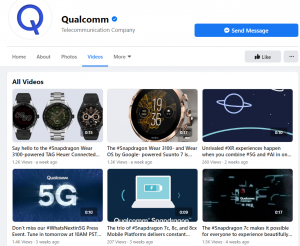I’ve always been fascinated by how much of a role everyday psychology plays in marketing.
There are so many cool ways to apply basic human behaviour to become a better marketer, and today I want to share one super-cool technique with you!
It’s called the “principle of reciprocity” and psychologists believe it’s so powerful that it’s literally hard-wired into the human brain. That means anyone can use it and apply it!
Learn all about the “principle of reciprocity” here:
Okay, so now it’s YOUR turn. I want you to tell me in the comments below how you plan to use the Principle of Reciprocity to get customers to buy from you? Tell me!!!
—-
Have you ever wondered why restaurants often give out a complimentary bread basket at the beginning of your meal?
It makes us feel good doesn’t it? To munch on some yummy hot aromatic bread often accompanied with butter or dips while we patiently wait for our food to arrive?
So why do they do it? To make us feel good?
That’s part of the equation -yes – but its actually got a lot more to do with marketing than you might think!
What you can Learn About Giving from Restaurants
There are a number of reasons restaurants do this. Some of them are:
– bread is an easy win – everyone loves good bread
– It’s delicious and carbs whip up an appetite so you order more
– it is hospitable, like an act of welcoming someone in your home (home being an analogy for a restaurant)
But did you also know that a complimentary bread basket is in line with a psychological marketing principle called the Principle of Reciprocity?
Yes it’s an actual thing!
What is the Principle of Reciprocity?
The Principle of Reciprocity states that if you do someone a small favour, then the chances that they will return that favour 10 times over are incredibly high!
People almost can’t help but say yes when they feel like they owe you one.
Now the Principle of Reciprocity is so deeply ingrained in the human psyche that psychologists call it “the essence of being human”.
So in other words, give before you ask.
In 1971, Professor Dennis Regan of Cornell University demonstrated the power of reciprocity by conducting a little art experiment.
In the experiment the subjects were asked to rate paintings along with a partner who was actually in on the experiment. Halfway through rating paintings, the partner would go and get something small like a soda. Half the time he got a soda bottle and half the time he returned with nothing. At the end of rating al the paintings, the partner would ask the subject if they would purchase raffle tickets from him. Most of the people who had accepted the soda purchased the raffle tickets, even though the cost of the raffle tickets was significantly more than the cost of the soda bottle.
There’s a key learning in here, and that is that you don’t have to give something of equal value to what you ask in return. You can even give something small in exchange for a big ask.
Whoa! That’s huge.
How to Influence Customers Using the Principle of Reciprocity
According to psychologist Dr. Robert Cialdini, this reciprocity principle is one of the key ways to exert influence.
Now you’ve seen the Principle of Reciprocity at play in various ways – from the cloth merchant who offers you a cup of tea, to the jewellery shop that offers you a soda to the grocery store that gives you free samples of food and drink.
Let me show you an example from a woman entrepreneur.
Today I am wearing a bracelet given to me as a gift by a woman entrepreneur, named Sukaina Abbas, who’s recently started her jewellery business, Enchante Jewellery.
Why am I telling you this?
She gifted me a gorgeous bracelet and now I want to tell everyone about her fine silver jewellery. So I Liked her page, I recommend her products, I promote her exhibition.
All because of the power of reciprocity
How to Apply the Principle of Reciprocity to Marketing?
If you freely provide something of value to your customers or your website visitors, they will be far more likely to provide you with their business in return.
Reciprocity is also relevant for link-building and relationship-building. If I link to your website, you’ll feel more inclined to link to my website in return. If I re-tweet you, you’ll feel more inclined to re-tweet me.
In short, effective marketing is all about exchange. If you give a little, you’ll get something in return.
Examples of things you could give your customers to encourage reciprocity:
- coupons
- gifts
- samples
- discounts
- free downloads
- free valuable content
Non-product ways to reciprocate:
- Say thank you
- Express gratitude
- Answer questions
- Respond to comments
- Write back, call back
Thanks for watching; see you next time on Content Marketing Tips!
(369)
Report Post






